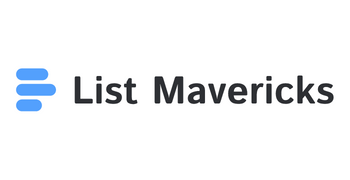In the fast-paced world of business, staying ahead is crucial. A solid lead generation strategy is how you do that. It’s about nurturing relationships and guiding potential customers through your sales funnel.
Many businesses struggle with marketing. In fact, 61% of marketers identified generating traffic and leads as their biggest challenge.
Let’s explore lead generation strategies that can transform your business. We’ll uncover tactics that attract potential customers and convert them into quality leads. There’s something here for everyone looking to supercharge their lead generation efforts.
Understanding the Lead Generation Landscape
Before strategies, understand what we’re dealing with. Lead generation isn’t one-size-fits-all.
It requires understanding your audience, market, and business goals. Over 30% of B2B sales take one to three months to close.
This extended sales cycle means that your lead generation strategy needs to be robust and patient. It’s about nurturing relationships over time.
Moreover, research shows that 48% of companies say leads require a long cycle before purchasing. This statistic underscores the importance of a well-thought-out lead nurturing process as part of your overall strategy.
Key Components of an Effective Lead Gen Strategy
Let’s break down essential components of a successful strategy:
1. Know Your Audience
The foundation is understanding your target audience. Who are they? What are their pain points?
What solutions are they looking for? Answer to create content that resonates.
2. Create Valuable Content
Content marketing is king in lead generation. Content needs to be valuable, relevant, and engaging.
This could be blog posts, whitepapers, ebooks, or webinars. Provide something your audience finds useful.
3. Optimize Your Website
Your website is often the first point of contact. Make sure it’s optimized.
This means clear calls-to-action, easy-to-fill capture forms, and user-friendly design. 81% of people have abandoned a form after beginning to fill it out.
4. Leverage Social Media
Social media platforms are goldmines. They let you reach a wide audience and engage.
LinkedIn is a powerhouse for B2B. According to research, 61 million LinkedIn users are senior-level influencers, while 40 million are in decision-making positions.
5. Implement Email Marketing
Email marketing remains effective. It allows for personalized communication.
Remember to keep emails valuable. Also, do not make them sound too salesy.
Advanced Lead Gen Strategies for 2024
Let’s explore advanced strategies that can give you an edge:
1. AI-Powered Lead Scoring
Artificial Intelligence is revolutionizing the lead generation process. AI analyzes data to score leads.
This allows focus on promising prospects. Gartner’s research predicts that artificial intelligence (AI) will dominate the market, making it a crucial component of future generation strategies.
2. Account-Based Marketing (ABM)
ABM flips the traditional lead generation funnel. Instead of casting a wide net, ABM targets specific high-value accounts.
This personalized approach can yield results. It works well for B2B companies.
3. Video Marketing
Video content is increasingly important. It’s engaging, shareable, and conveys information quickly.
YouTube has 122 million active users daily, and on average they watch 16 minutes and 44 seconds of content every day. That’s a massive potential audience for your generation efforts.
4. Chatbots and Conversational Marketing
Chatbots engage visitors 24/7. They answer questions and guide them.
They’re excellent for lead capture and providing value. It’s the preferred way for 42% of people to connect with a company.
5. Intent Data
Intent data identifies prospects researching solutions. This helps you target more effectively.
99% of large companies are using intent data, and 98% of marketers are confident about using it as well. Adding a referral program can increase your chances of landing clients.
Measuring the Success of Your Lead Gen Strategy
Implementing is only half the battle. To optimize, you need to measure success. Here are key metrics:
- Conversion Rate: Percentage of visitors who become potential leads.
- Cost per Lead: How much you spend to acquire each lead.
- Lead Quality: Not all are equal. Track how many leads become customers.
- Time to Conversion: How long it takes.
- Return on Investment (ROI): Overall return.
Remember, 67% of lost sales result from not properly qualifying leads. Make sure you generate high-quality leads.
Here is a way to visualize your metrics:
| Metric | Description | Importance |
|---|---|---|
| Conversion Rate | Percentage of visitors who become leads | Measures effectiveness of your lead capture form and landing pages |
| Cost per Lead | Amount spent to acquire each lead | Helps manage your budget and optimize spending |
| Lead Quality | Assessment of how likely a lead is to become a customer | Ensures your sales team focuses on the best prospects |
| Time to Conversion | Duration it takes for a lead to become a customer | Helps understand the sales cycle length |
| ROI | Overall return on lead generation campaigns | Determines profitability of efforts |
Using these metrics, track how well you’re performing and find areas to improve.
Common Pitfalls to Avoid in Your Lead Gen Strategy
Here are common mistakes that derail efforts:
1. Ignoring Mobile Users
With more browsing on mobile, be mobile-friendly. This includes responsive design and easy forms.
Do not ignore this.
2. Neglecting Lead Nurturing
50% of qualified leads aren’t ready to purchase at first contact. Don’t ignore leads not immediately ready.
Implement nurturing to keep prospects engaged.
3. Over-Relying on One Channel
Don’t put all your eggs in one basket. A diverse strategy using multiple channels is better.
This could include content, social media, email, and paid advertising. This gives you more opportunities to reach potential buyers.
4. Failing to Personalize
Personalization is key. 83% of marketers struggle with creating personalized content because they don’t know their customers.
Understand your audience and tailor your approach. Get to know each individual potential customer better.
5. Not Aligning Sales and Marketing
Sales and marketing need to be on the same page. Ensure clear communication about qualified leads.
Having aligned sales teams improves your lead generation technique and results.
FAQs about lead gen strategy
What is lead gen strategy?
A lead generation strategy is a plan to attract and convert. It involves tactics to capture interest.
This encourages them to provide contact info or take action.
What are the 4 L’s of a lead generation strategy?
The 4 L’s are Lead, Listen, Learn, and Leverage. Lead is initiating contact.
Listen means paying attention to needs. Learn is gathering data, and Leverage is using info to convert.
What are the best lead generation strategies?
Best strategies include content, social media, and email marketing. Also, search engine optimization (SEO), pay-per-click, webinars, and referrals.
Effectiveness varies, so test and refine.
Which are the 4 steps of the lead generation process?
The 4 steps are: 1) Attract , 2) Convert, 3) Qualify, and 4) Nurture. Attract draws potential buyers.
Convert encourages contact info. Qualify determines best leads. Nurture builds relationships through communication and adding valuable content.
Conclusion
Crafting an effective strategy is no small feat. It requires understanding your audience, adapting, and commitment.
With the right approach, it’s a game-changer. Lead generation isn’t just collecting info; it’s building relationships, providing value, and guiding.
By implementing strategies and avoiding pitfalls, you create a lead generation strategy that converts prospects into loyal customers. Success doesn’t happen overnight.
It takes time and effort. With persistence and right tactics, you can fuel business growth.
So, are you ready to take your lead gen strategy to the next level? It’s time to act and watch your business thrive.

